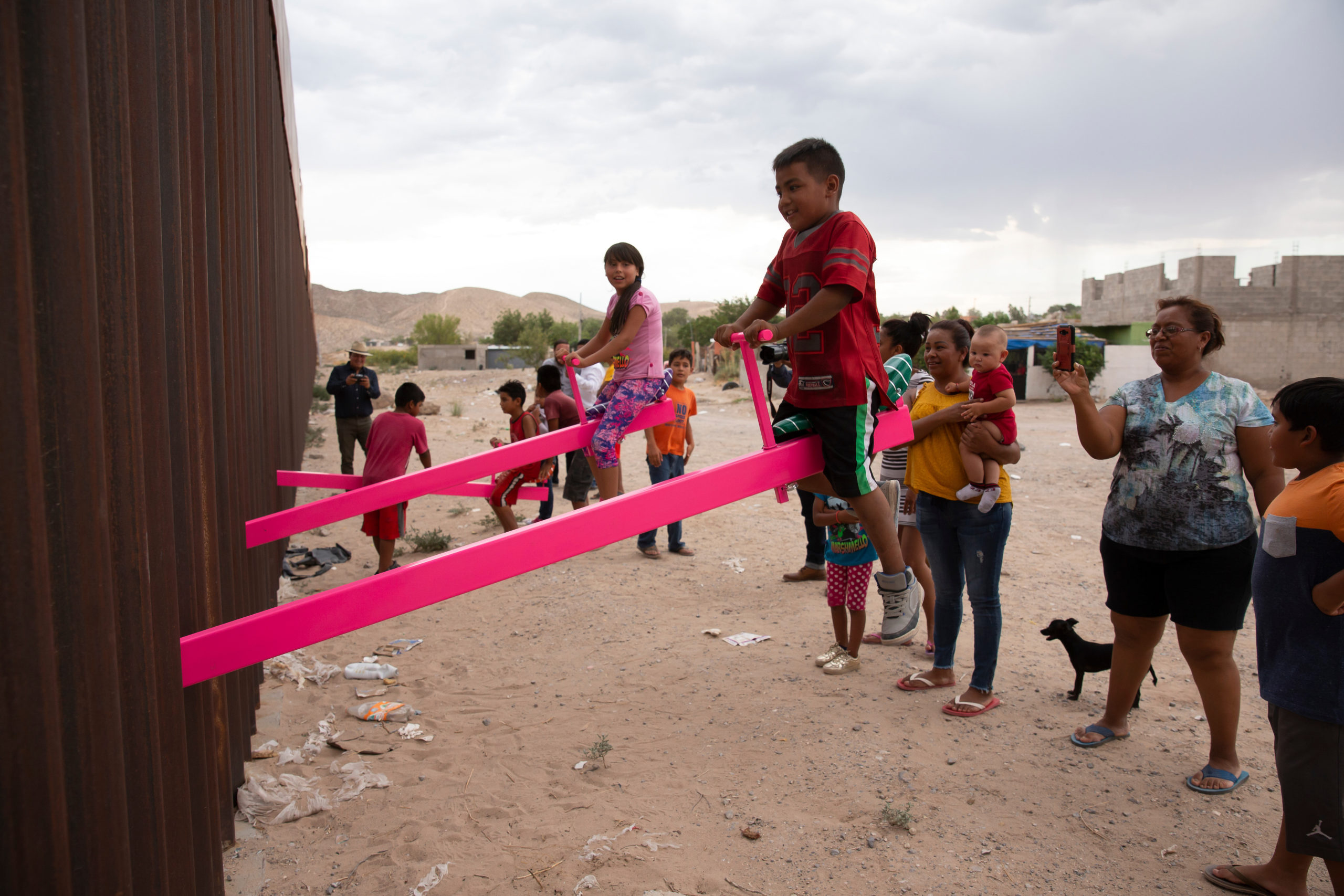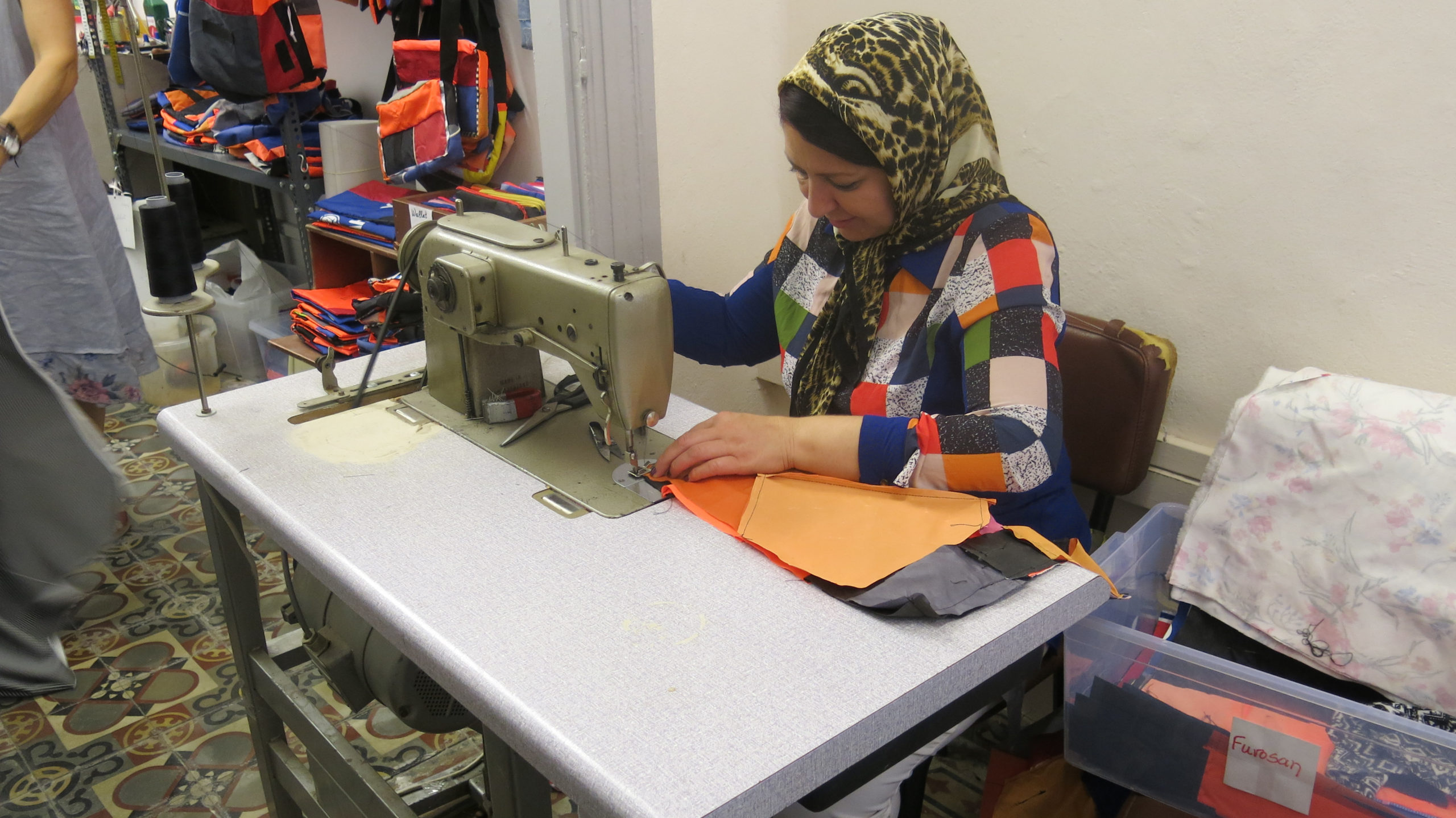A Conversation with Cynthia E. Smith
![Bold, yellow letters spelling out [Act Now] standing in middle of highway with large yellow circle with x-shape flat on the ground in front. Skyline and demonstrators in background](https://www.cooperhewitt.org/wp-content/uploads/2022/06/Extinction-Symbol-scaled.jpg)
Extinction Symbol Designer: ESP Location: Global 2011-present Photo credit: © Martin Reis
![Bold, yellow letters spelling out [Act Now] standing in middle of highway with large yellow circle with x-shape flat on the ground in front. Skyline and demonstrators in background](https://www.cooperhewitt.org/wp-content/uploads/2022/06/Extinction-Symbol-scaled.jpg)
Extinction Symbol Designer: ESP Location: Global 2011-present Photo credit: © Martin Reis
Cynthia E. Smith, Curator of Socially Responsible Design, shares insights into her research for Designing Peace and how her work is emblematic of the museum’s longstanding interest in the powerful role design can play on the world stage. We’re grateful for the efforts of so many people whose dedication and commitment has brought this compelling project to life.
Visit Cooper Hewitt to experience the exhibition, on view through September 4, 2023.
Tell us about socially responsible design at Cooper Hewitt.
My previous research at Cooper Hewitt has resulted a series of exhibitions, including Design for the Other 90% and By The People: Designing a Better America, examining the numerous ways in which designers and communities work together to build a more just and equitable world.
Designing Peace is the latest installation of this series. This exhibition, along with its accompanying publication and programs, explores the role of design in building a durable peace and expands the discourse on what would be possible if society were to design for peace.
As America’s design museum, Cooper Hewitt provides opportunities to convene conversations and advance public understanding of the ways in which design can improve our lives—and this series demonstrates that design has the capacity to address even some of our most vexing issues.
Why did you decide on Designing Peace?
Peace can feel like an elusive and out-of-reach concept, especially in an era of ongoing conflicts, growing uncertainty and chaos, and escalating environmental damage and socioeconomic inequity. Yet, most of humanity values peace; it is one of our most sought-after human conditions and a key pillar of the United Nations Sustainable Development Goals (SDG 16 focuses on peace, justice, and strong institutions).
People all around the world are challenging structures and systems forged through inequity, injustice, and dominance—and they are using creative strategies, including practices of design, to do so. The work of designing for peace is being undertaken at multiple levels, and it is extremely diverse, ranging from theoretical explorations to practical solutions across geographies and cultures.
I wanted to shed light on this growing global movement that is modeling a different kind of future—one with inclusive, participatory societies that value equity, justice, creativity, and mutual cooperation.

Teeter-Totter Wall; Designers: Ronald Rael, Virginia San Fratello, Rael San Fratello; Collaborators: Collectivo Chopeke; Anapra, Chihuahua, Mexico and Sunland Park, New Mexico, USA; 2019; Photo credit: Ronald Rael and Virginia San Fratello
How did you go about your research?
I started with this question: What might be possible if we were to design for peace? From the beginning, so many came together to make this research possible. Thanks to our program partners, I was able to conduct field research speaking with refugees who have been forced to flee their homes, local organizations fighting injustice and exclusion, and communities confronting division, among many others. I was also able to meet with designers and artists active in the field of humanitarian design, and interviewed peace researchers and others working in peacebuilding and peacekeeping.
Designing Peace is a selection of forty of the design proposals, initiatives, and interventions that I encountered, from across twenty-five countries—represented by objects, models, full-size installations, maps, images, and film. From creative confrontations that challenge existing structures to designs that demand embracing justice and truth in a search for reconciliation, the featured design responses underscore the numerous and varied ways in which we can address conflict and division and create a more sustainable peace.
What stays with you most from your experience?
It is the people I met and the humanity they displayed for each other, even in the most challenging conditions. In 2017, I visited a citizen-run refugee camp on the small Greek island of Lesbos. When people fleeing conflict, persecution, and poverty—five thousand a day at its peak—began arriving, local residents, in solidarity with the refugees, converted a former children’s summer camp called Pipka into an open refugee camp.
One of the first things I encountered was a set of orange life jackets strung along a fence, spelling out “SAFE PASSAGE” in large, black letters. The abandoned vests, just a few of the thousands worn by migrants making the treacherous eight-mile voyage across the Aegean Sea from Turkey, symbolized the right to safe passage and the promise that Pipka would provide support as the migrants continued their journey in search of a better future.
Over eight years, the Pipka solidarity camp provided a dignified reception for the most vulnerable and offered medical and legal assistance, along with language and job training, for refugees and locals alike. It shows the power of collective action—and the importance of designing spaces that nurture respect for each other—in creating a more just and inclusive peace.

Safe Passage Bags Workshop; Designers: Lesvos Solidarity; Collaborators: Humade Crafts; Lesbos, Greece; 2015-present; Photo credit: Cynthia E. Smith © Smithsonian
What kind of impact do you hope Designing Peace will have?
The goal for Designing Peace is to demonstrate that peace is not simply the absence of war, nor is it a static condition. It is, rather, a dynamic state whose creation and maintenance requires ongoing effort, expertise, and multidimensional problem solving. Peace can be built, nurtured, and achieved in a multitude of ways, in different contexts, and at various scales.
I’m thrilled to see this project already empowering the next generation of designers to think creatively. This year’s National High School Design Competition, inspired by the theme of Designing Peace, challenged students to develop designs that contribute to a more peaceful and just world—and we received 722 astounding entries from across the country.
My hope is that Designing Peace continues to inspire people to collectively pool our creative forces to envision the future we want to live in—and for each and every one of us to take action now to create it, starting with our own lives and communities.
Cynthia E. Smith is Cooper Hewitt, Smithsonian Design Museum’s Curator of Socially Responsible Design. She integrates her training as an industrial designer with her advocacy on human rights and social justice issues, organizing a humanitarian-focused design exhibition and publication series, serving on international design juries, and lecturing widely on socially responsible design.
Designing Peace is made possible with lead support from
![]()
Major support is provided by Lisa Roberts and David Seltzer. Generous support is also provided by the Lily Auchincloss Foundation, Helen and Edward Hintz, and the Barbara and Morton Mandel Design Gallery Endowment Fund. Additional support is provided by Agnes Gund, the Consulate General of the Netherlands in New York as part of the Dutch Culture USA program, the Cooper Hewitt Master’s Program Fund, the Netherland-America Foundation, the Norwegian Consulate General, and the New York State Council on the Arts with the support of the Office of the Governor and the New York State Legislature. In-kind support is provided by Tretford Americas and Consolidated Flooring.
The National High School Design Competition is made possible with major support from Shelby and Frederick Gans. Generous support is also provided by Adobe.
Featured Image: Extinction Symbol Designer: ESP Location: Global 2011-present Photo credit: © Martin Reis
One thought on “A Conversation with Cynthia E. Smith”
Melvin Hardy on June 29, 2023 at 10:50 am
Superior interview. Dr. Smith is are most important subject matter experts and practitioners in the peace building field.